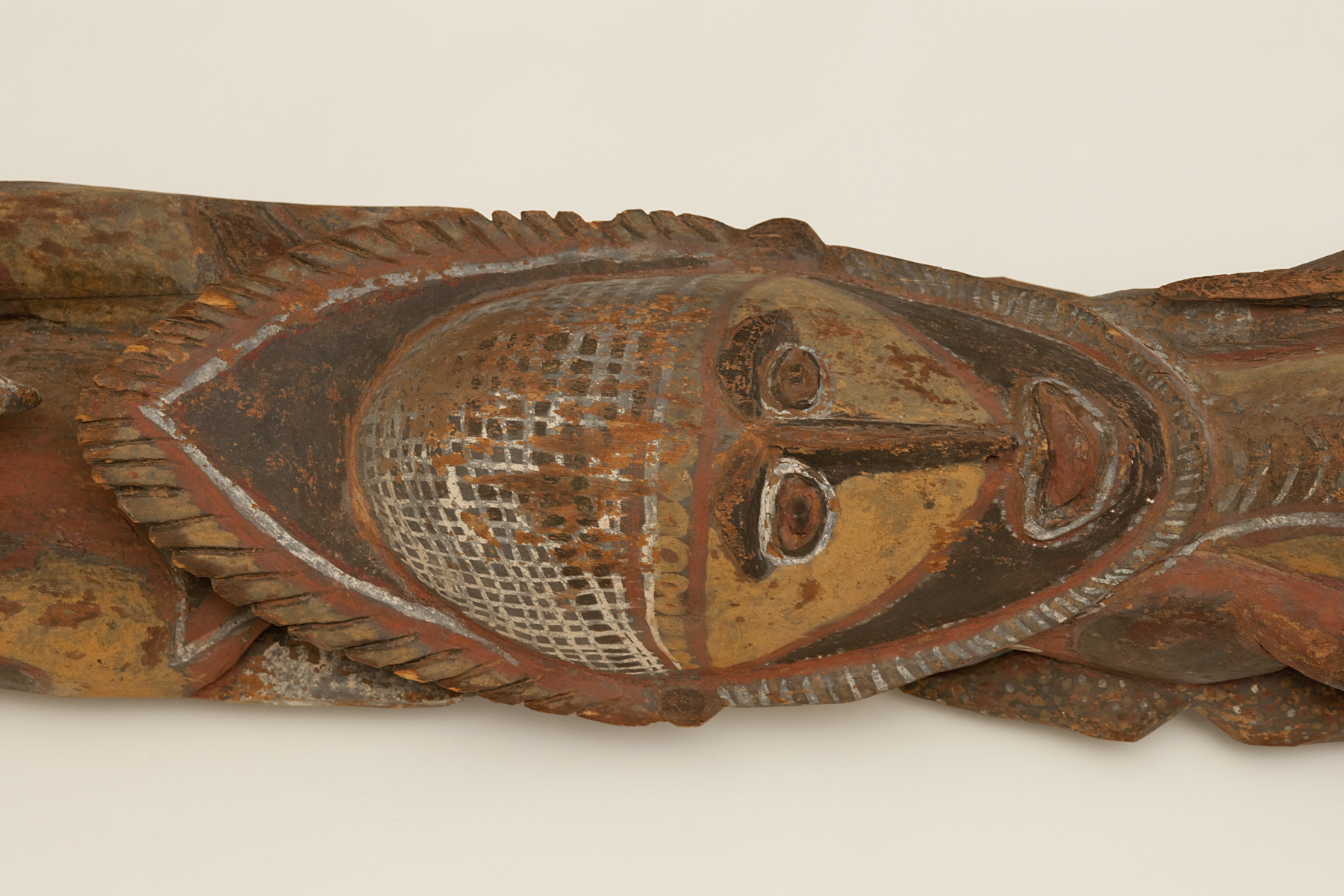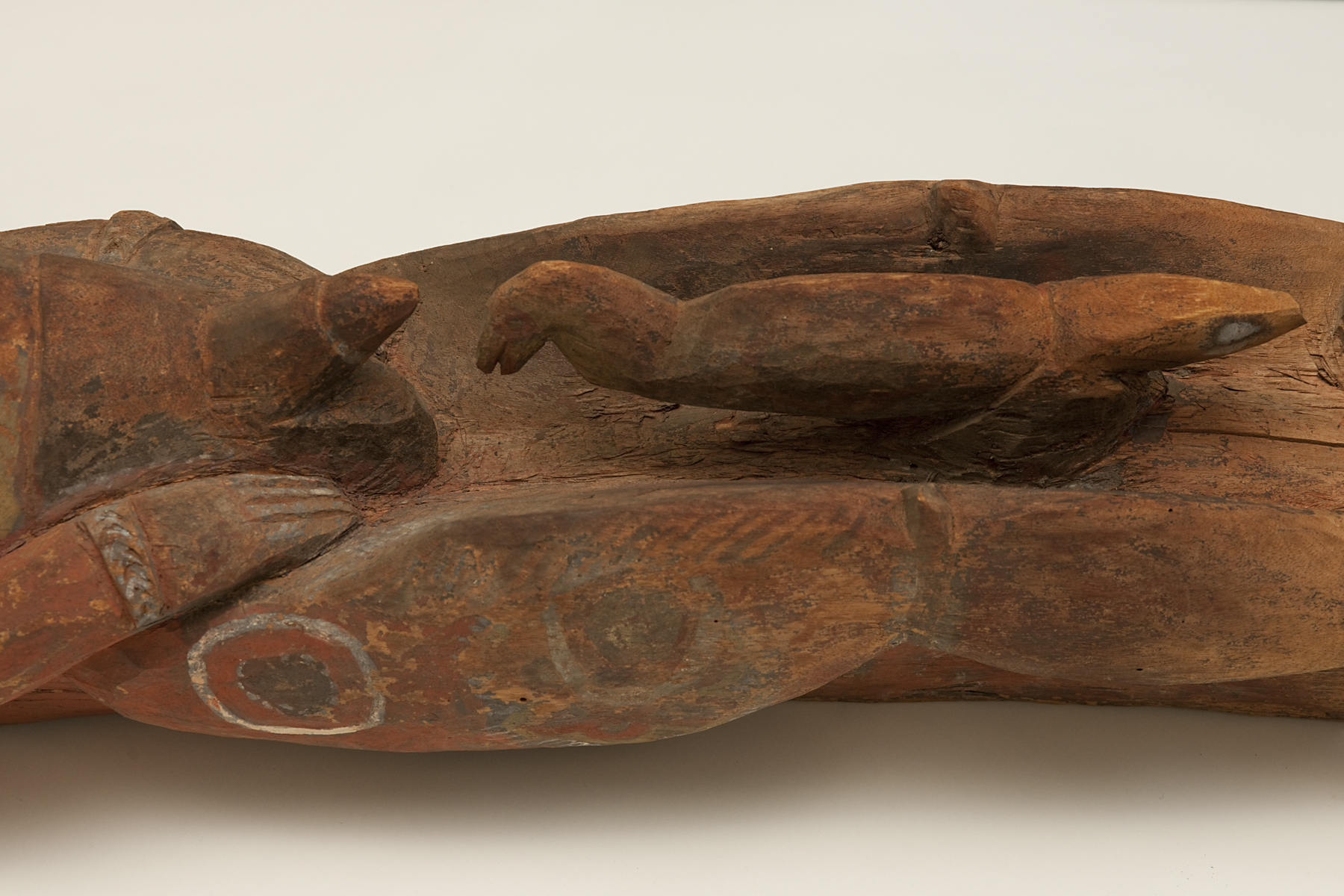nggwalndu (male spirit figure), unrecorded Abelam artist
Artwork Overview
unrecorded Abelam artist, artist
nggwalndu (male spirit figure),
1850s–1969
Where object was made: Central Maprik Region, Papua New Guinea
Material/technique: pigment; carving; wood
Dimensions:
Object Height/Width/Depth (Height x Width x Depth): 206 x 28 x 26 cm
Object Height/Width/Depth (Height x Width x Depth): 81 1/8 x 11 x 10 1/4 in
Object Height/Width/Depth (Height x Width x Depth): 206 x 28 x 26 cm
Object Height/Width/Depth (Height x Width x Depth): 81 1/8 x 11 x 10 1/4 in
Credit line: Gift of Dr. and Mrs. Franklin D. Murphy
Accession number: 1977.0030
Not on display
If you wish to reproduce this image, please submit an image request






